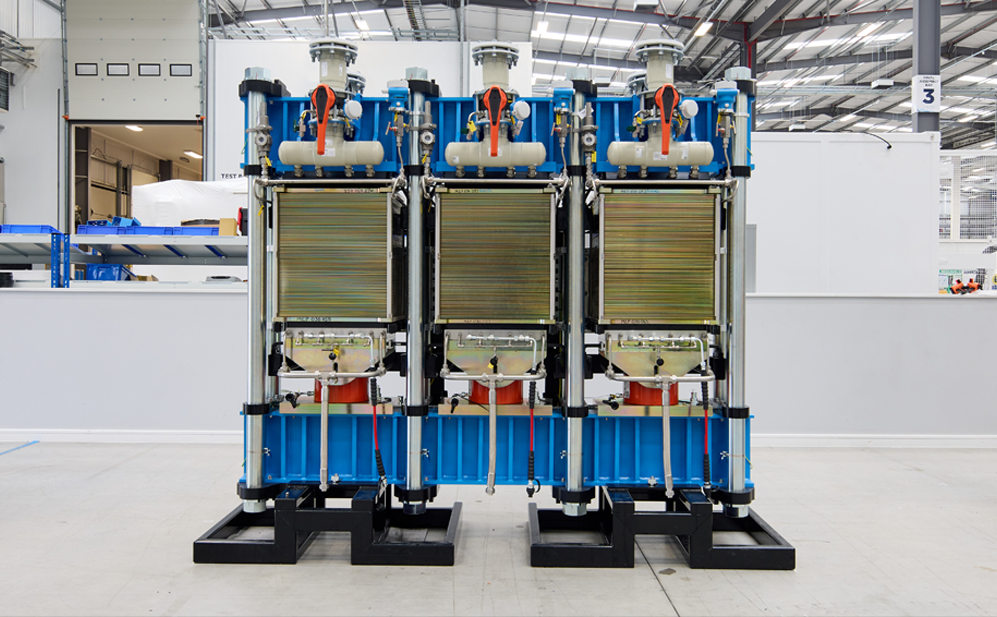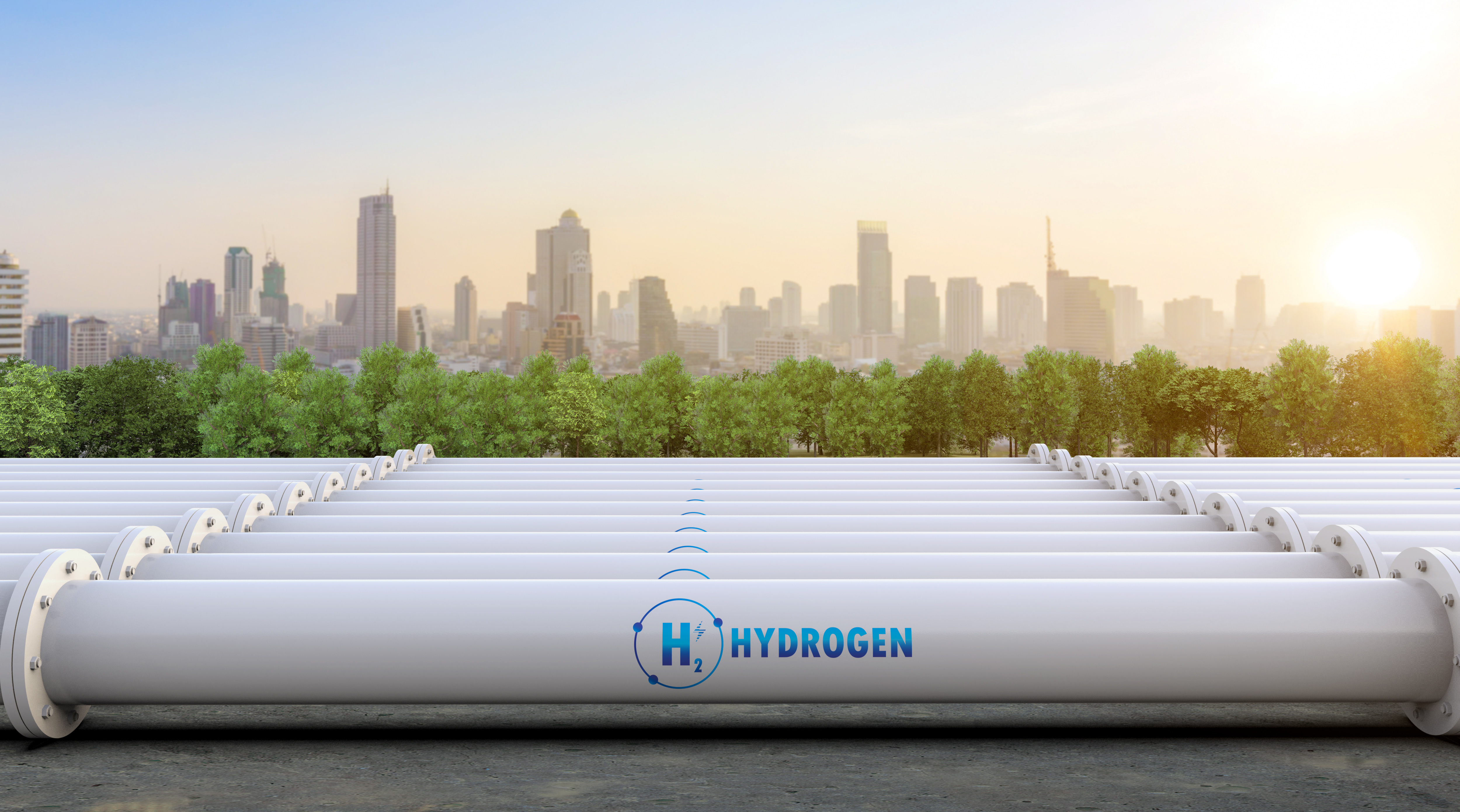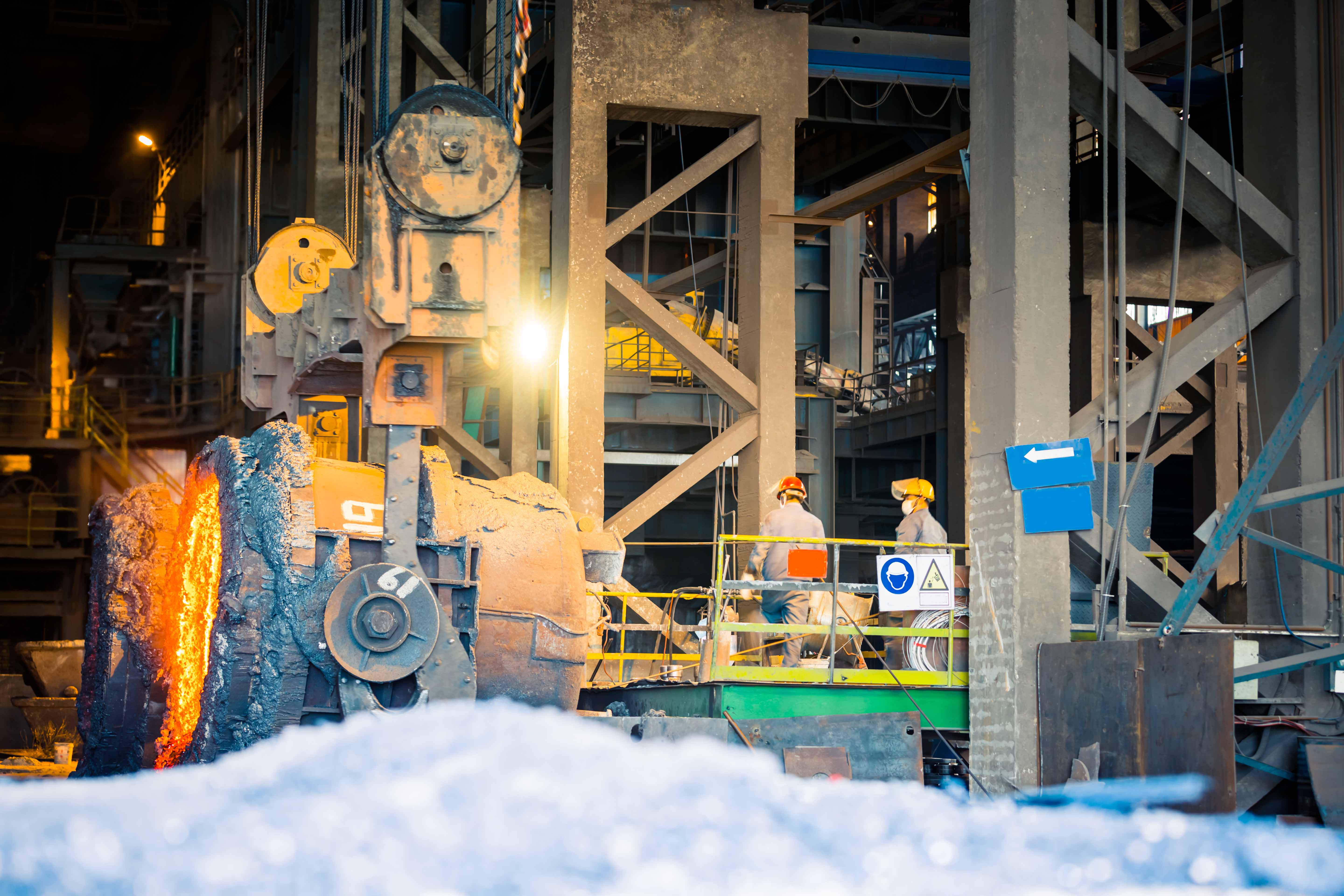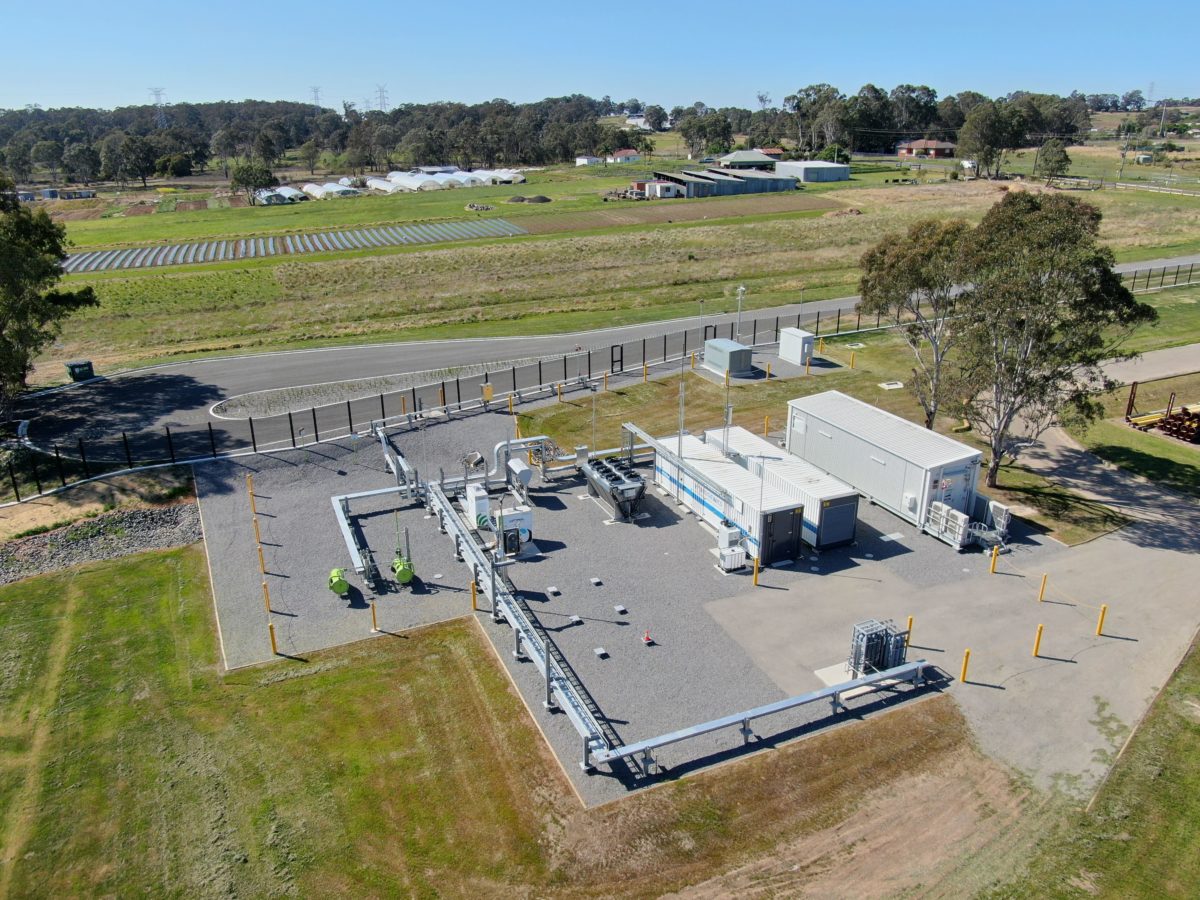Green hydrogen continues to draw a lot of attention as a renewable gas solution with large-scale potential for decarbonisation. However, there are multiple technical hurdles that serve as barriers to its widespread adoption.
Before we discuss the implications of green hydrogen, we must first understand what hydrogen is. While hydrogen is “the simplest and most common element in the Universe”, here on Earth, “it generally doesn't occur naturally in its pure form” and rather forms part of “other materials, such as water, biomass, fossil fuels or minerals”, as Fiona Brown and Daniel Roberts from the CSIRO point out. This means if we want to utilise it as fuel, we need ways to extract it from those other materials.
Different Types of Hydrogen
The most prevalent processes for industrial production of hydrogen gas can be categorised into two types; brown hydrogen, derived from coal or lignite gasification and grey hydrogen, produced through steam methane reformation with natural gas as a feedstock. While offering low cost of hydrogen production, neither of these methods are climate-friendly, as they both emit large amounts of carbon dioxide into the atmosphere.
Blue hydrogen, where the CO2 emissions from steam reforming are captured and sequestered underground, has been mooted as a clean way of using fossil fuels to produce hydrogen. However, blue hydrogen remains controversial as the technology has not been demonstrated reliably at scale and remains energy-intensive.
 Polymer Electrolyte Membrane (PEM Electrolysers)
Polymer Electrolyte Membrane (PEM Electrolysers)
Green hydrogen shows great potential for nearly eliminating emissions by utilising renewable energy, often available at non-optimal times, for water electrolysis. According to the Office of Energy Efficiency and Renewable Energy (EERE), “electrolysis is the process of using electricity to split water into hydrogen and oxygen”. This is usually done using electrolysers, which can vary significantly in size and also technology, with the existence of different types such as Polymer Electrolyte Membrane (PEM Electrolysers), Alkaline Electrolysers and Solid Oxide Electrolysers. Renewable hydrogen can also be produced as bio-hydrogen through processes such as pyrolysis of biomass residues.
While there are other varieties such as pink (electrolysis powered by nuclear energy) and turquoise (produced from methane pyrolysis or with heat reactors and blast furnaces) hydrogen, there are very few, if any commercial examples of these varieties.
Pros and Cons
As Brown and Roberts point out, the main advantages of green hydrogen are that “each kilogram of hydrogen contains about 2.4 times as much energy as natural gas” and “the only input needed to release this energy is oxygen and the only output is water”. This also means that hydrogen produces “zero greenhouse gas emissions” when utilised as an energy source.
However widespread adoption faces challenges, including a shortage of large-scale electrolysers and the cost of procuring a reliable supply of renewable electricity. One of the primary hurdles to green hydrogen adoption is distribution to its end-users. Transporting this highly flammable gas is complex because while hydrogen delivers an excellent energy-to-weight ratio, it has a very low energy density on a volumetric basis. Also, since hydrogen atoms are so small, they can slip through solid steel and cause existing gas pipelines to crack (a phenomenon known as hydrogen embrittlement). Due to such issues, hydrogen distribution necessitates dedicated pipelines or energy-intensive processes such as pressurisation and liquefaction for bulk transport. These requirements further diminish green hydrogen’s overall efficiency.

To make a business case for green hydrogen, substantial quantities of inexpensive renewable electricity are required. This is due in part to significant energy losses during the electrolysis process, which typically operates with efficiencies ranging from 60% to 80%. This efficiency challenge is compounded by applications often using green hydrogen for fuel cells, incurring additional losses.
Green Hydrogen Applications
The Fuel Cell & Hydrogen Energy Association (FCHEA) points out that hydrogen “has a long history of being utilized in a wide variety of industries, and the majority of hydrogen today is used in fields like oil refining, ammonia production, and methanol production”:
- In oil refining, hydrogen is used for converting crude oil into more useful fuels.
- It is also an essential part of the Haber-Bosch process, where it is combined with nitrogen to make ammonia (mainly used for fertilisers).
- In methanol production, hydrogen’s interaction with carbon monoxide produces the chemical feedstock.
While most of this hydrogen was supplied using fossil fuels, the International Energy Agency (IEA) projects that “there is significant potential for emissions reductions from clean hydrogen”.
There are also industries where green hydrogen can replace fossil fuels, such as in steelmaking where according to the FCHEA, “hydrogen is being considered as a replacement for coal and other carbon-emitting fuels that are necessary for the process”. Concrete production is another area where hydrogen can be utilised to displace fossil fuels, but this application is still in the experimental stage.
 Hydrogen can be used in steelmaking
Hydrogen can be used in steelmaking
Researchers from The University of Queensland rate commercial applications for green hydrogen such as residential heating, cars, light-duty trucks and short-haul aviation, as low priority items due to the high effectiveness and suitability of technologies such as batteries for these applications. They allocate slightly higher priority to long-distance transportation such as trains, ferries, heavy-duty trucks and long-haul aviation, but they rate industrial applications listed above as the highest priority items.
Green Hydrogen Utilisation
The most common and well-known way to utilise green hydrogen is in a fuel cell, which produces electricity utilising the chemical energy of hydrogen, with only water and heat as byproducts. According to EERE, fuel cells can achieve package efficiencies “exceeding 60%”, especially when the heat can be utilised for productive purposes. The high energy conversion efficiency of such technology assists in improving the economics of using hydrogen while costs remain high.
Another lesser-known and emerging way to utilise hydrogen is in a microturbine, which does have lower electrical efficiency compared to a fuel cell, but the microturbine solution allows for better heat recovery and hence is more suitable for cogeneration applications.
Optimal Group’s Experience
Optimal Group has delivered multiple projects involving hydrogen, with the most notable one being for Jemena in 2019, where we converted a C65 microturbine to run on hydrogen in another world first. It was for a project named the Western Sydney Green Gas project, which Jemena pursued to investigate and innovate hydrogen applications in Australia. This project also included an Optimal packaged 30 kW fuel cell to meet Jemena's deadline requested by the Australian Renewable Energy Agency (ARENA) and to demonstrate the advantages of each technology.

Furthermore, we are trialling the new Panasonic 5 kW fuel cell here in Australia for commercial applications in preparation for the new 10 kW module which will be globally available mid to late 2024. They have an unparalleled industry-leading electrical efficiency rating of 56% with over 90% package efficiency when used in cogeneration mode. They also have a modular and scalable design, as demonstrated recently with the installation of 500 kW of these units at Panasonic’s manufacturing facility in Kusatsu, Japan.
Optimal is also the Australian service partner for ITM Power, a world-leading manufacturer of electrolysers and we are in charge of servicing several green hydrogen systems across Australia.
Sources
Banihabib, R., Lingstädt, T., Wersland, M., Kutne, P., & Assadi, M. (2023). Development and testing of a 100 kW fuel-flexible micro gas turbine running on 100% hydrogen. International Journal of Hydrogen Energy, 49. 92–111. https://doi.org/10.1016/j.ijhydene.2023.06.317
Brown, F., & Roberts, D. (2021, May 26). Green, blue, brown: the colours of hydrogen explained. CSIRO. https://www.csiro.au/en/news/all/articles/2021/may/green-blue-brown-hydrogen-explained
Clifford. C. (2022, January 6). Hydrogen power is gaining momentum, but critics say it’s neither efficient nor green enough. CNBC. https://www.cnbc.com/2022/01/06/what-is-green-hydrogen-vs-blue-hydrogen-and-why-it-matters.html
FCHEA. (n.d.). Hydrogen In Industrial Applications. https://www.fchea.org/hydrogen-in-industrial-applications
IEA. (2019, June 14). The Future of Hydrogen. https://www.iea.org/reports/the-future-of-hydrogen
Menezes, F. (2023, March 31). Explainer – The economics of green hydrogen in Australia (Part 1). The University of Queensland. https://aibe.uq.edu.au/article/2023/03/economics-of-green-hydrogen-in-australia-part-1
Office of Energy Efficiency & Renewable Energy. (n.d.). Fuel Cells. https://www.energy.gov/eere/fuelcells/fuel-cells
Office of Energy Efficiency & Renewable Energy. (n.d.). Hydrogen Production: Electrolysis. https://www.energy.gov/eere/fuelcells/hydrogen-production-electrolysis
Purtill, J. (2021, January 23). What is green hydrogen, how is it made and will it be the fuel of the future? ABC News. https://www.abc.net.au/news/science/2021-01-23/green-hydrogen-renewable-energy-climate-emissions-explainer/13081872
